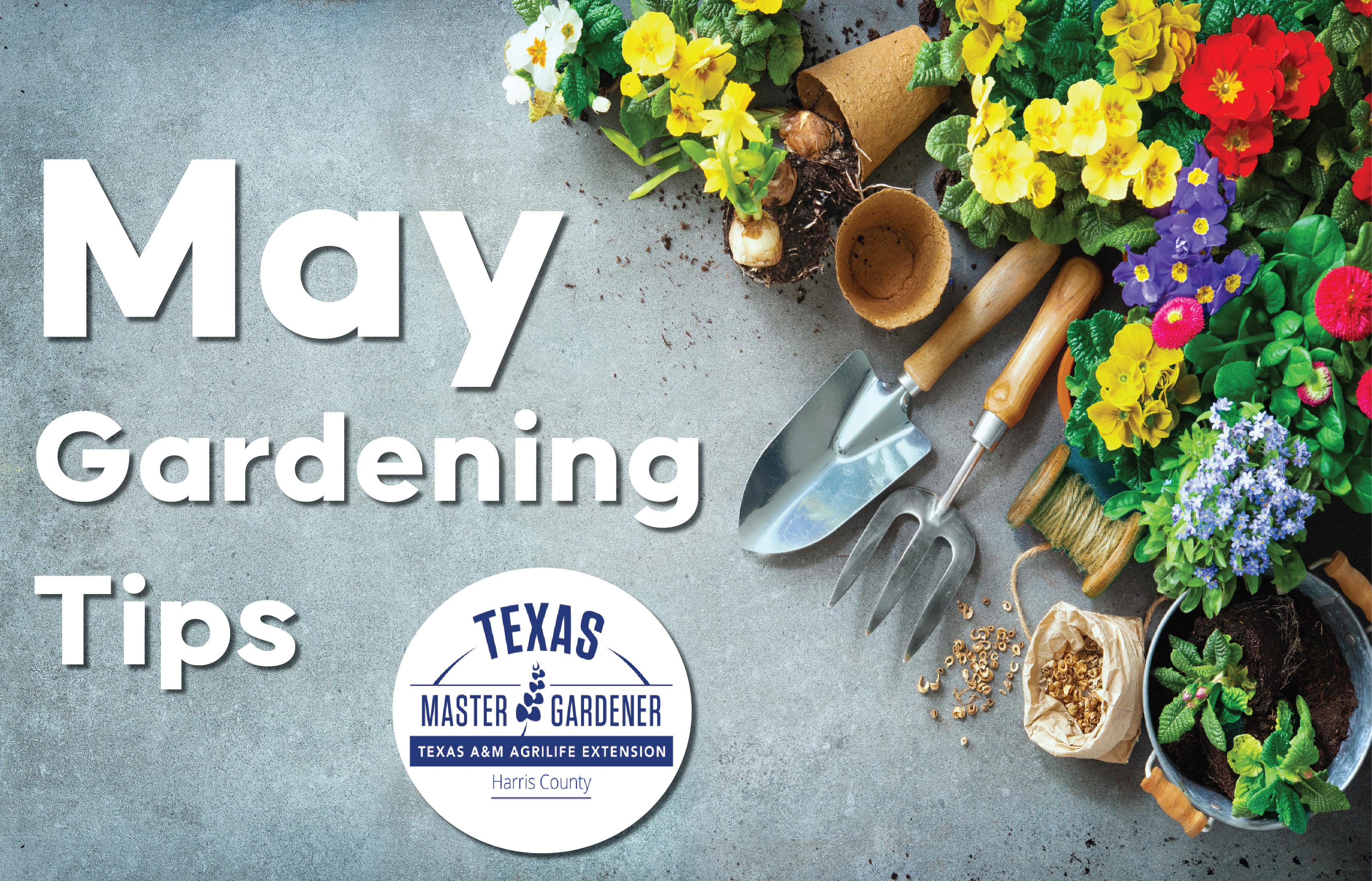
May Gardening Tips for Harris County: Local Advice for Thriving Spring Landscapes in Your Region
With spring in full swing and summer creeping in, May is a pivotal month for gardeners across Harris County—from Houston and Cypress to Tomball, Spring, and beyond. Rising temperatures and longer days set the stage for flourishing landscapes, vibrant blooms, and bountiful harvests—but also introduce challenges like pests and drought stress.
Thankfully, residents have access to expert guidance through the Harris County Master Gardeners, a volunteer program supported by the Texas A&M AgriLife Extension Service. Their research-backed tips are tailored to the region’s unique climate and help homeowners create sustainable and thriving gardens.
To explore seasonal planting guides, pest control tips, and more, visit the Harris County Master Gardeners website.
Preparing for the Heat: Mulching and Moisture Control
“May reminds us why we need to get our gardening advice locally,” says Karen Shook, a Harris County Master Gardener. “While average temperatures might seem manageable, those mid-90s daytime highs are a clear sign that summer has arrived.”
Shook recommends applying a 2-inch layer of mulch to all garden beds to help retain moisture and keep root zones cool. With rainfall becoming less predictable, smart irrigation becomes critical. New sod, for instance, should be watered daily for 15 minutes in its first week—adjusting if it rains.
Pest Watch: Know the Good from the Bad
As the weather warms, insects become more active—but not all are harmful. “Some pest damage is inevitable,” says Shook, “but not all insects are pests. Learn to recognize the good guys.”
Gardeners are encouraged to consult this Texas Vegetable Garden Insects Field Guide to identify beneficial species like ladybugs and lacewings that naturally manage pest populations.
Mobile Sidebar Ad
Flowers, Shrubs, and Lawns: Maintenance Is Key
Perennials & Ornamental Grasses
Deadhead spent blossoms and cut back perennials by one-third to encourage fresh blooms. Summer is also a good time to plant ornamental grasses, provided they get adequate water. Fertilize selectively—only if growth seems sluggish or leaves pale.
Annuals & Bulbs
Swap out fading cool-season annuals for heat-tolerant varieties. Many can be direct-seeded if kept well-watered. After bulbs bloom, remove seedpods to save the plant’s energy and fertilize actively growing bulbs.
Shrubs & Trees
Prune spring-flowering trees and shrubs—such as azaleas—by early June. Palms should be planted in the warm, wet months of summer.
Lawn Care
Mow frequently, ensuring only one-third of the blade is removed at a time. This promotes lawn density and reduces weed growth. Apply caution with herbicides, as many can damage grass during hot weather.
For low areas in the lawn, fill with soil that matches your native topsoil for a smooth transition.
Edible Gardening in May
Still dreaming of summer crops? There’s time to plant:
-
Okra
-
Southern peas
-
Sweet potatoes
These heat-loving staples thrive when planted in moist, pre-soaked soil. And if you’re already harvesting early-season produce—enjoy the fruits of your labor!
Check out the full Harris County Vegetable Planting Guide for more planting timelines and crop tips.
Mobile Sidebar Ad
Groundcovers, Vines & Roses: Shape Up Your Landscape
Groundcovers like Asian jasmine can be divided and replanted in May, and even into early June. Woody vines, including spring bloomers, should be pruned after their flowering season ends. Tidy them up by snipping back excess and weaving stems through supports.
For rose lovers, May is the time to cut a few morning blooms to enjoy indoors. Continue spraying every 7 to 10 days for blackspot and aphids, and fertilize every 4 to 8 weeks depending on the plant’s health.
“Healthy roses need regular feeding and grooming to bloom through November,” adds Shook. “Don’t forget to clean up any dropped leaves to reduce disease.”
Learn More and Ask Questions
To dig deeper into the world of local gardening, explore the Harris County Master Gardeners’ Urban Dirt Index, a comprehensive library of resources at hcmga.tamu.edu/urban-dirt-index.
Have a question about your soil, plants, or pests? Reach out directly through their Ask a Master Gardener portal at hcmga.tamu.edu/ask-a-question.
 Tiffany Krenek has been on the My Neighborhood News team since August 2021. She is passionate about curating and sharing content that enriches the lives of our readers in a personal, meaningful way. A loving mother and wife, Tiffany and her family live in the West Houston/Cypress region.
Tiffany Krenek has been on the My Neighborhood News team since August 2021. She is passionate about curating and sharing content that enriches the lives of our readers in a personal, meaningful way. A loving mother and wife, Tiffany and her family live in the West Houston/Cypress region.









